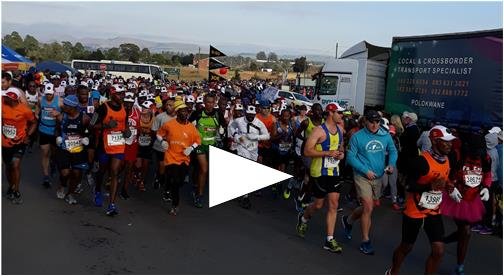In ultradistance running, who needs a bus?

South Africa is a country of many extreme sporting events and in road running, the country holds the record for the highest number of participants in an ultramarathon (distances greater than 42.2km in road running). The official record was set in 2010 http://www.guinnessworldrecords.com/world-records/most-runners-in-an-ultra-marathon- but this year in 2018, there were about 17000 finishers. This means that the the 2010 record has been broken a few times since then.
The Comrades Marathon is unique in many ways, but the one concept that I think many marathons and ultramarathons in the world have since adopted is the "Bus".
A bus is a group of runners that are led by a "bus driver" with sufficient knowledge and experience of the course to provide a service to get runners to the finish within the cut-off time. The Comrades Marathon is run from gun to gun, that means the race finishes at the other end at a specific time. The final cutoff for the race is 12 hours but there are a few cut-off sites along the route to remove runners that have no prospect of finishing the race by cut-off.
The bus drivers participate in various marathons and ultra-marathons in the country throughout the year and build up a "following" and so at Comrades, some runners would have identified the bus drivers they would like to run behind on the big day.
To complete the Comrades Marathon is no mean feat - it is two tough marathons with an additional 5km (89km) and for those whose experience is confined to flat city marathons of the world, they will find the course very challenging. To complete the course you need a good strategy and the busses provide a service to those that are not inclined to work their own strategies or do not trust their understanding of the course. There are at least 2 buses for each of the major time targets - Sub 12-hour, Sub 11:30 , Sub 11:00, Sub 10:30 etc. and runners who use these buses do this pretty much at their own risk. The majority of the finishers do not use busses but along the route, these large groups provide the much needed break in the monotony especially as they sometimes break into song on tough climbs. In many instances the bus drivers complete the race with a fraction of their original passengers and this is because individuals go through lows and highs at different parts of the route.
There are many advantages and disadvantages to using a bus - but my advice is always that you get onto a bus as long as it is aligned to your strategy. You leave it behind or let it go depending on what your plans are. I think that everyone towing the line should try and develop a race strategy and then use the buses for motivation, if needed, or for change of scenery. The road is long and it passes some parts that supporters cannot reach. I have found that the few instances I have spent in a bus, especially one that is lively and a bit chatty, have helped swallow a few kilomietres in no time, but I have always looked at my watch to make sure that I do not get carried away.
This year would have been my 10th run, but because of a condition in my arteries, I have missed 3 medals and so I am hoping to tow the line next year in 2019.
▶️ DTube
▶️ IPFS
I was at the Halfway mark handing out fruit - great times
Really great times indeed. I was at 35km and 59km. I would like to go participate again next year.